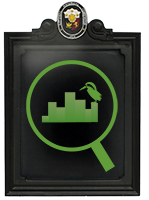 Juan Luna Shrine
Juan Luna ShrineJuan Luna Shrine is a National Shrine, NHCP; Local Cultural Property - Cultural and Historical Heritage of the Province of Ilocos Norte (per Provincial Ordinance Nos. 049-2006 and 039-2009); Registered Property, Province of Ilocos Norte located at Badoc, Ilocos Norte, Region I.
The birthplace of painter and patriot Juan Luna. One bedroom has the original bed of Juan Luna. Reproductions of the painter’s great works are on display, as well as artifacts related to the history of Badoc.
_____
Marker Texts:
Birthplace of Juan Luna y Novicio
Patriot and foremost Filipino painter. Born in Badoc, Ilocos Norte, 24 October 1857; son of Joaquin Luna de San Pedro and Laureana Novicio. Studied in the Ateneo Municipal, Escuela de Bellas Artes and Escuela Nautica in Manila; became a licensed pilot at 17. Pupil of Lorenzo Guerrero, noted Filipino painter. Went to Spain, 1877, studied in the Academia de Bellas Artes de San Fernando, Madrid. Painted in Rome his first famous work, “The Death of Cleopatra”. Won gold medal for his Spoliarium at the International Painting Exposition, 1884, in Madrid. Won other medals and honors in Europe. Among his other notable paintings were “The Battle of Lepanto”, “The Blood Compact”, “People and Kings”. Co-worker of Rizal, Lopez–Jaena, del Pilar and other Filipino reformers in Europe; was in the Diplomatic Service of the First Philippine Republic. Died in Hongkong, 7 December 1899.
Year Unveiled: 1957
_____
Bahay ni Luna
Sa bisa ng Resolusyon Bilang 3, Oktubre 7, 1976 ng Pambansang Suriang Pangkasaysayan na binigyan ng karapatan ng Seksyon 4 ng Kautusan ng Pangulo Bilang 260, Agosto 1, 1973, na sinusugan ng Kautusan ng Pangulo Bilang 375, Enero 14, 1974 ang gusali at pook na ito ay ipinahayag na Pambansang Palatandaang Makasaysayan.
Year Unveiled: 1977
_____
Birthplace of Juan Luna
At this place in Badoc, Ilocos Norte, Juan Luna y Novicio, famous painter and patriot, was born October 23, 1857. His parents were Joaquin Luna and Laureana Novicio. Educated at the Ateneo Municipal de Manila and the Escuela de Bellas Artes in Manila. Luna then attended the famous school of arts in Madrid, Paris and Rome. One of the great artists that the Philippines ever produced, he won international fame with the following paintings: Spolarium, La Esclava Ciega, La Muerte de Cleopatra, España y Filipinas, El Pacto de Sangre, La Batalla de Lepanto, La Conquista de Grana, Triclinium, Dofre y Cleo, La Huelga, Roma en Tiempo de Aliglisto, Hymenes, Plieblos y Reyes, Bodas Romanas and Ecce Homo. Returning to the Philippines from his sojourn in Europe, death overtook him in Hongkong December 7, 1899.